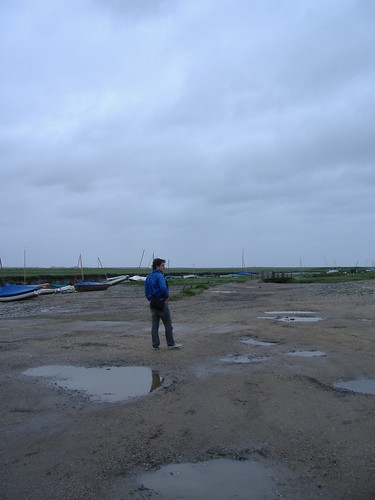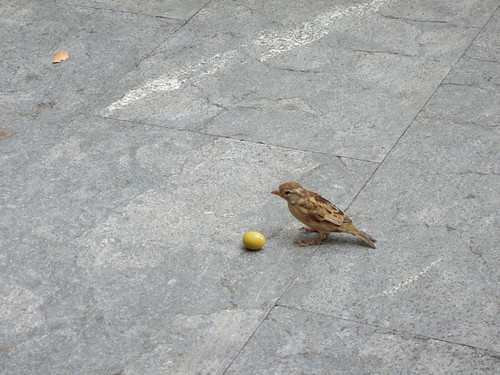By way of a warm-up before I begin my day at the Green coalface...
A couple of weeks ago I went down to London to see the exhibition of Derek Jarman paintings/ films at the Serpentine gallery and to watch Darlington who, the previous weekend, had depressed me in pouring rain with a 3-1 capitulation to Bradford at the Arena. There seemed to be something incongruous about these activities: Jarman, probably wisely, would almost certainly have had very little time for moribund right-wing twittering that often characterises 'football culture' (nailed here rather succinctly by Stewart Lee.) Where football in this country is often interpreted as a political opiate, and the seat of a tendentially aggressive anti-intellectualism (one needs only look at the treatment of Graeme le Saux or, to a slightly lesser extent, Pat Nevin), Jarman militated in favour of the rigorous questionings of orthodoxies and the celebration of the very differences that factions within the sport attempt to ignore or persecute. That said, Jarman's recurrent themes, his 'significant addictions' if you will- Englishness, apocalypticism, rebellion, youth culture, the covert association between violence and the formation of sexual identities- read almost like a list of the issues that are simultaneously encoded within and ignored by the (rightly) maligned genre of the 'football hooligan film'. I've long thought that hooliganism, an event within culture that was occurring on a scale of unacknowledged vastness (the logistics of the temporary migration of thousands of young males to fight across the length and breadth of England every winter Saturday are hard to comprehend), needs a serious treatment that goes beyond the lad-porn of films like ID, The Football Factory and Green Street. I think that the closest we're going to get to an intellectual cinematic treatment of the way football becomes a sublimation of the deeper, darker currents which flow beneath English life will be the forthcoming adaptation of David Peace's The Damned United, which will hopefully eschew the overly-familiar nostalgia of programs like Life on Mars in favour of brooding industrial menace and a Ballardian take on Berney Inns. That said, The Damned United is about those within the games rather than the fans/ troublemakers, who occupy a menacing background role (in the novel, Brian Clough's car radio is used to create a 'barbarians at the gate' effect as it recounts ever more worrying tales of trouble on the terraces.)
Anyway, although it didn't include Jarman's lost take on British Rail-based mayhem, the exhibition was very interesting. It included his Francis Bacon-like tar paintings, which I thought had an almost shocking 'thereness', as if the religious iconography collaged into the works had, in their misattribution, manifested a traumatic vacuity or absence within thought. There were also lightboxes showing scenes from Jarman's famous gardens in Dungeness (the scene, in one of my favourite crossings of incongruous lines of imaginative force, of a rather poignant moment in Eastenders a couple of years ago). There was also a screening of the experimental film Blue, and a 'life of the artist' film narrated by Tilda Swinton. Surprisingly, given the bleakness of the subject matter, I left feeling rather lifted by the assurance that Jarman's work tended to afford the notion of art itself, which is to say that both the paintings and the films rail against the easy cynicism of soft postmodernism with the energy and exuberance of an only just excusably late romanticism. Art is regarded as the catalyst for the release of political and personal potential in his work, perhaps even as the activity- not, one hopes, the institution- which harnesses and reveals the elan vital- if you'll excuse my rather flabby attempts to co-opt Henri Bergson into my attempts to bring this paragraph to closure.
Afterwards, I went for a pint in Waterloo Station and made notes- which I've since lost- which would have made this post sound slightly more authoritative. Then it was onto London Bridge to meet Thom and head up the Northern Line to Barnet which is, alongside Macclesfield, the most twee town to have a club in the football league. We went to a real ale pub on Barnet High Street and then wandered down through the Metrolandish suburbs to the ground. Kick-off was delayed by half an hour due to floodlight failure, which created a nervy atmosphere amongst the travelling supporters who were already desperate for points. The game itself was a bit nothing-y, a 0-0 draw marked by its paucity of scoring opportunities. At least we got to go on the DLR, which I still experience as a massive novelty, on the way back to Greenwich.
The next day I strolled down by the Cutty Sark, had a quick explore of Canary Wharf (as you do) and had by bi-annual peruse of the Tate Modern, an activity that nearly always gives me 'art vertigo' and, inexplicably, leaves me with a head-cold.
I'd best do some writing now...
J
Tuesday, 22 April 2008
Subscribe to:
Post Comments (Atom)



2 comments:
Do you have a spam issue on this site; I also am a blogger, and I was wondering your situation; many of us have
created some nice procedures and we are looking
to trade techniques with other folks, please shoot me
an email if interested.
Also visit my web site :: particuliere vakantiehuizen
Every weekend i used to pay a quick visit this
web page, for the reason that i want enjoyment,
since this this site conations really good
funny material too.
Also visit my site ... vakantiehuisje frankrijk
Post a Comment